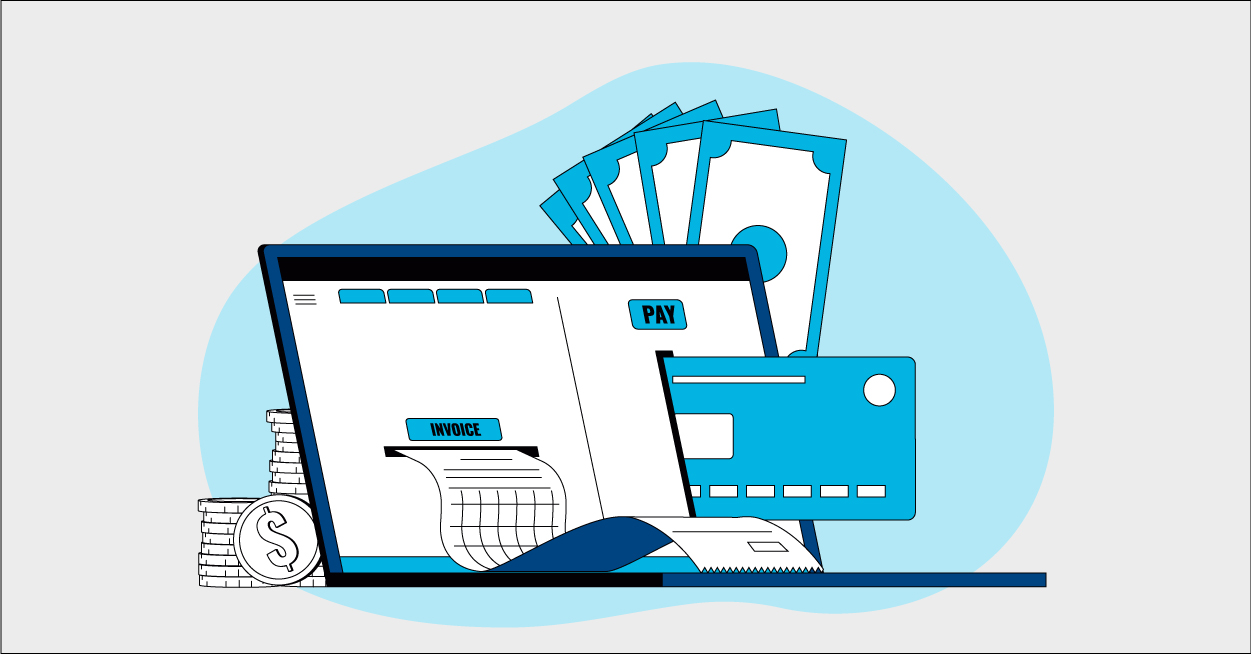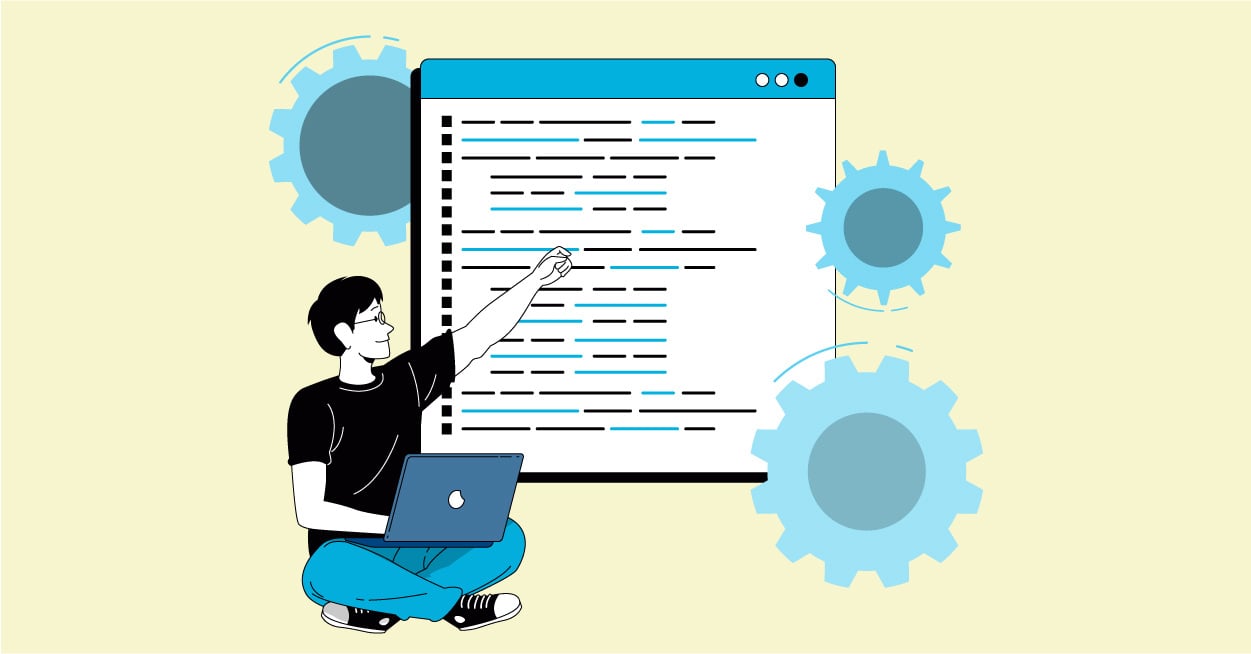Online retail sales are booming, expected to top $6.33 trillion in 2024. Mobile shopping will grab a huge chunk of that, over $2.5 trillion! With so much at stake, your retail app needs to be rock-solid. That's where retail testing comes in. It's how you ensure your app is flawless, user-friendly, and secure. This guide covers everything you need to know about retail software testing, from functional and usability tests to performance and security checks. We'll also touch on retail app testing and other key aspects of software testing in retail, so you can build an app that thrives in today's competitive market. eMarketer’s Retail E-commerce Sales Worldwide mobile shopping
This explosive growth underscores the critical role that retail applications play in today’s digital economy. These applications, ranging from e-commerce platforms to point-of-sale (POS) systems, are the backbone of modern retail, as they provide consumers with seamless shopping experiences and businesses with efficient operational tools.
Thorough testing of retail applications is paramount to their success. It ensures that these systems operate smoothly and securely while protecting sensitive data. Effective testing identifies and mitigates potential issues before they impact users, maintaining the reliability and trustworthiness of the retail platform. Given the extent of and reliance on digital transactions, comprehensive testing can’t be overlooked.
Where to Begin Your Retail Testing Journey?
Retail applications encompass a variety of systems, each with its unique testing requirements.
Key Takeaways
- Thorough testing is essential for retail app success: From e-commerce platforms to POS systems, testing ensures smooth operations, happy customers, and protection against security risks. Prioritize testing for functionality, usability, security, performance, and compatibility.
- A strategic approach to testing is key: Define clear goals, select the right testing methods (like unit, integration, or system testing), and integrate testing throughout development. Use a mix of open-source tools (like Selenium) and commercial tools to meet your specific needs.
- The retail landscape is always changing, so stay adaptable: Keep up with new technologies and customer expectations. Focus on mobile, accessibility, and localization testing to reach a wider audience. Consider AI-powered test automation to improve efficiency and coverage as e-commerce expands.
Testing E-commerce Platforms
E-commerce platforms are the cornerstone of online retail. They require rigorous functional testing to ensure that key features, such as product search, shopping cart management, and checkout processes, operate flawlessly. User experience testing is equally important, as it evaluates the interface for intuitiveness, clarity, and ease of navigation, which are crucial for customer satisfaction. Security testing is also critical to protect sensitive user data, including payment information and personal details, from potential breaches.
Testing Mobile Shopping Apps
With the rise of mobile shopping, apps must undergo thorough performance testing to handle varying loads and ensure fast, responsive interactions. Compatibility testing is necessary for these apps, as they need to function impeccably across a wide range of devices and operating systems, regardless of the hardware or software configurations of the users’ devices.
Testing POS Systems
POS systems, essential for in-store transactions, require precise testing for payment processing accuracy. Integration testing with inventory management systems is also vital to ensure that sales data updates inventory records in real time, preventing discrepancies and maintaining operational efficiency.
Beyond these functional aspects, nonfunctional testing considerations such as performance, scalability, and security are crucial for all retail applications. Performance testing ensures the application can handle high traffic volumes, particularly during peak shopping periods. Scalability testing evaluates the application’s ability to grow and manage increased loads as the business expands. Security testing remains a constant priority, safeguarding against data breaches and cyber threats.
Testing Inventory Management Systems
Effective testing of inventory management systems is essential for maintaining accurate stock levels, preventing stockouts, and optimizing supply chain operations. These systems are crucial for ensuring businesses fulfill customer orders promptly and efficiently. A well-defined testing process, including thorough planning and analysis, is essential to find and fix problems before they affect customers. This includes verifying real-time inventory updates, which prevent overselling and ensure customers have access to accurate product availability information. Accurate inventory data is like having a perfectly organized pantry—you know exactly what you have, how much, and where to find it. Testing helps maintain that organization within your system.
In case inventory management is not done in-house, make sure to partner with e-commerce 3PL order fulfillment services that offer advanced inventory management solutions, providing real-time stock visibility. This can include systems with automated reorder points and seamless integration with your e-commerce platform, ensuring efficient inventory control. This setup will ensure that you have accurate and timely information about your logistics operations and inventory data.
Testing also ensures that all software applications used in a retail business—POS systems, inventory management software, e-commerce platforms, CRM systems, etc.—work together correctly. For example, when a customer makes a purchase online, the inventory management system should automatically update stock levels to reflect the sale. This integration prevents discrepancies between what's displayed online and what's available in the warehouse. Thorough testing validates these processes, ensuring smooth and accurate transactions across all platforms. For complex systems, consider AI-powered test automation services for comprehensive and efficient testing.
Essential Retail Software Testing Techniques
Effective testing of retail applications involves several key techniques to ensure that these platforms function seamlessly and securely.
- Functional testing verifies that the core functionalities of retail applications, such as product search, shopping cart management, and checkout processes, operate without issues. This type of testing checks each feature against specified requirements to detect and fix any bugs or inconsistencies, making sure that users can perform essential tasks smoothly and efficiently.
- Usability testing focuses on the user interface and overall user experience. It evaluates how intuitive, clear, and easy the application is for users. By simulating real user interactions, usability testing helps identify any design flaws or user experience issues that could hinder a smooth shopping experience.
- Security testing identifies and mitigates vulnerabilities that could expose sensitive information, such as payment details and personal data. This type of testing involves simulating various cyber-attacks to ensure the application can withstand threats and comply with data protection regulations.
- Performance testing evaluates the application’s response times, load capacity, and stability under stress. After all, retail applications must be able to handle high traffic loads, especially during peak shopping seasons or sales events.
- Compatibility testing guarantees that the application functions correctly across different platforms, providing a consistent and smooth user experience regardless of the user’s device or software environment.
Functional Testing
Functional testing is the cornerstone of retail application testing. It ensures all features work as expected, like a quality check for every user interaction—from browsing products and adding them to a shopping cart to completing the checkout process. Functional testing catches bugs early, preventing frustrating glitches that could drive customers away. It verifies that each function adheres to predefined requirements, ensuring a smooth and efficient user experience. For example, imagine a customer trying to apply a discount code during checkout, only to find it doesn't work. Functional testing helps prevent such scenarios by validating these core functionalities.
Unit Testing
Unit testing focuses on the smallest parts of your application, testing individual components or modules in isolation. This helps identify bugs early in the development cycle, before they become larger, more complex problems. By isolating each unit, developers can pinpoint the source of errors quickly and efficiently, saving time and resources. Think of it like checking the individual ingredients of a recipe before combining them—ensuring each element is perfect before creating the final dish.
Integration Testing
Once individual units are working correctly, integration testing checks how these different modules interact. This is crucial for retail applications, which often rely on multiple interconnected systems. For instance, your e-commerce platform might integrate with payment gateways, inventory management systems, and shipping providers. Integration testing ensures these systems communicate seamlessly and data flows correctly between them, preventing issues like incorrect inventory updates or failed transactions.
System Testing
System testing takes a holistic view, evaluating the entire integrated application to ensure it meets all specified requirements. This is the final stage of testing before the application goes live, simulating real-world scenarios to identify any remaining bugs or performance issues. System testing verifies the application functions as a cohesive whole, providing a seamless and reliable experience for end-users. It's like a final dress rehearsal before a big performance, ensuring everything works together harmoniously.
Regression Testing
Whenever you update your retail application with new features or bug fixes, regression testing is essential. It ensures these changes haven't inadvertently broken existing functionalities. This type of testing is crucial for maintaining stability and preventing unexpected issues after updates. It's like double-checking your work after making revisions, ensuring everything still functions as intended.
User Acceptance Testing (UAT)
User acceptance testing (UAT) puts the application in the hands of real users to validate it against their specific requirements. This provides valuable feedback on the user experience and identifies any remaining usability issues. UAT ensures the application is ready for real-world use and meets the needs of its target audience. Think of it as a test drive before buying a car, allowing users to experience the application firsthand and provide feedback before its official launch.
Non-Functional Testing
Non-functional testing focuses on aspects beyond the core features, such as performance, security, and usability. These elements are crucial for a positive user experience and the overall success of a retail application. For a comprehensive approach to testing, consider exploring MuukTest's AI-powered test automation services.
Performance Testing
Performance testing evaluates how well the application responds under various conditions. This includes measuring response times, load capacity, and stability under stress. For retail applications, performance testing is especially important during peak shopping periods, ensuring the system can handle high traffic volumes without crashing or slowing down. It's like testing a car's engine to ensure it can handle different speeds and terrains. Learn more about optimizing performance with MuukTest's solutions.
Load Testing
Load testing assesses the application's behavior under expected user loads. This helps determine if the application can handle the anticipated traffic and identify potential bottlenecks. It's like simulating a busy shopping day to see how the application performs under pressure.
Stress Testing
Stress testing pushes the application to its limits, subjecting it to extreme conditions and loads to determine its breaking point. This helps identify vulnerabilities and ensure the application can handle unexpected surges in traffic or other stressful situations. It's like a stress test for the application, revealing its robustness and resilience.
Security Testing
Security testing is paramount for retail applications that handle sensitive customer data, including payment information and personal details. This type of testing identifies vulnerabilities and weaknesses that could be exploited by attackers. Security testing helps protect against data breaches and ensures compliance with data protection regulations. It's like installing a security system to protect your store from theft. Explore MuukTest's pricing to see how they can help secure your retail application.
Usability Testing
Usability testing focuses on the user interface and overall user experience. It evaluates how intuitive and easy the application is to use, identifying any areas that could be improved to enhance user satisfaction. Usability testing ensures the application is user-friendly and enjoyable to use. It's like getting feedback from customers on how to improve the store layout and make it more appealing.
Accessibility Testing
Accessibility testing ensures the application is usable by people with disabilities, adhering to accessibility guidelines and standards. This includes considerations for users with visual, auditory, motor, or cognitive impairments. Accessibility testing promotes inclusivity and makes the application accessible to a wider audience. It's like ensuring your store has ramps and accessible restrooms for all customers. Get started quickly with MuukTest's QuickStart.
Advanced Retail App Testing Strategies
In addition to testing techniques, advanced strategies help retail applications meet the highest standards of functionality, accessibility, and global reach.
API Testing for Retail
API testing focuses on the application programming interfaces that enable various software components to interact, such as payment gateways or inventory management systems. This testing ensures that APIs function correctly and reliably, providing seamless integrations that are essential for smooth operations. For instance, when a customer completes a purchase, the payment gateway must communicate effectively with the inventory system to update stock levels in real time. Any disruption in these interactions can lead to significant operational issues, making API testing vital for maintaining the integrity of the application’s ecosystem.
Retail Accessibility Testing
Accessibility testing ensures that retail applications are usable by people with disabilities, adhering to the Web Content Accessibility Guidelines. This type of testing evaluates the application’s interface to ensure it is navigable via screen readers, keyboard-only navigation, and other assistive technologies. It also checks for sufficient color contrast, text readability, and the presence of alternative text for images. Accessible applications comply with legal requirements and expand a retailer’s customer base by catering to a broader audience.
Testing for Localized Retail Experiences
Localization testing is essential for retail platforms serving a global audience. This testing evaluates how the application adapts to different languages, currencies, and regional settings. It checks that all text is correctly translated, date and time formats are appropriate for the locale, and currency conversions are accurate. Additionally, localization testing ensures that cultural nuances are respected, providing a relevant and comfortable shopping experience for users from different regions.
Performance Testing for Peak Seasons
Performance testing is crucial for retail applications, especially with the concentrated bursts of activity during peak seasons like Black Friday, holiday shopping, or major sales events. These periods bring significantly higher traffic, and your application needs to be ready. As Leapwork points out in their guide to retail software testing, performance testing ensures your application can handle these high traffic volumes. Slow loading times or system crashes during these critical periods can lead to lost sales and damage your brand’s reputation. Thorough performance testing mitigates these risks.
Load Testing for Peak Traffic
Load testing simulates real-world traffic conditions to see how your application performs under pressure. Testsigma highlights this in their discussion of retail application testing, emphasizing how load testing helps evaluate your software's ability to handle peak traffic like Black Friday. By simulating many concurrent users, load testing identifies bottlenecks in your system. This information is invaluable for optimizing your application's performance during peak seasons.
Stress Testing for System Stability
Stress testing pushes your application beyond its expected limits. This helps determine the breaking point of your system and how it recovers from extreme conditions. Leapwork's retail software testing guide emphasizes the value of stress testing for evaluating response times and stability under duress. Understanding how your application behaves under extreme stress is crucial for preventing failures and ensuring business continuity during unexpected traffic spikes. This knowledge allows you to implement safeguards and recovery mechanisms.
Omnichannel Testing
Today’s retail landscape often involves multiple interconnected channels. Omnichannel testing ensures a consistent customer experience across these touchpoints. A customer might start shopping on their phone and finish on their desktop, or order online and pick up in-store. Leapwork's insights on retail software testing highlight end-to-end testing, verifying that all systems work together seamlessly. This testing is essential for resolving any integration issues between different channels, ensuring a smooth experience regardless of how customers interact with your brand. Consider services like MuukTest for comprehensive and efficient testing solutions across all your retail channels.
Essential Tools for Retail Application Testing
Effective retail application testing requires the right set of tools and adherence to industry standards and best practices. Popular testing tools commonly used include Selenium for automation, which helps in executing repetitive tests efficiently, and JMeter for performance testing, which is essential for assessing the application’s behavior under various load conditions.
Leveraging industry standards and best practices helps teams maintain high-quality testing processes. Standards such as ISO/IEC/IEEE 29119 provide comprehensive guidelines for software testing. Following these standards guarantees that testing procedures are thorough, consistent, and capable of identifying critical issues early in the development process.
By using advanced tools and adhering to established standards, testing teams can enhance the reliability, security, and performance of retail applications, ultimately delivering a seamless and satisfying user experience. For those looking to deepen their knowledge, numerous online courses and industry reports are available, offering valuable insights into retail application testing best practices.
Open-Source Tools
Open-source tools offer a cost-effective entry point for retail app testing, providing flexibility and community support. While they often require more technical expertise to set up and maintain, the benefits can be substantial for teams with the right resources.
Selenium
Selenium is a widely-used open-source framework primarily known for automating web browsers. This makes it a valuable tool for testing the functionality and user experience of e-commerce websites. Because it supports multiple programming languages like Java, Python, and C#, Selenium can integrate into diverse development environments. You can learn more about Selenium's capabilities through their official documentation.
Appium
With the increasing dominance of mobile commerce, testing mobile apps is crucial. Appium shines in this area, providing a framework for automating tests on native, hybrid, and mobile web apps. Like Selenium, Appium supports multiple programming languages and can interact with various mobile platforms, making it a versatile choice for retail businesses with a mobile presence. Check out the Appium website for more details.
JUnit
JUnit is a popular unit testing framework specifically designed for Java applications. In the context of retail applications, JUnit helps ensure the individual components of your software function correctly. This is particularly useful for testing backend processes, APIs, and other core functionalities. The JUnit 5 User Guide offers a comprehensive resource for getting started.
Commercial Tools
Commercial tools often provide more advanced features, dedicated support, and user-friendly interfaces, making them a good choice for teams looking for robust solutions and streamlined workflows. While they come with a price tag, the increased efficiency and comprehensive features can offer a significant return on investment.
MuukTest (For comprehensive AI-powered testing)
For a comprehensive, AI-powered approach to testing, MuukTest offers a compelling solution. We specialize in delivering complete test coverage within 90 days, significantly enhancing test efficiency and coverage for our clients. Our services include expert QA, seamless integration with CI/CD workflows, and scalable solutions tailored to your specific needs. To learn more about how MuukTest can improve your retail application testing, explore our test automation services or connect with us for a QuickStart consultation.
Next Steps in Retail Testing
Thorough testing is crucial for the success and security of retail applications. It ensures that applications perform well and provide a seamless user experience. Testers should explore the unique challenges of retail testing, such as ensuring mobile app compatibility and securing payment gateways.
Online courses, industry reports from organizations like ISTQB, and tools like Selenium and JMeter can provide valuable insights and practical knowledge to improve testing strategies.
Building a Comprehensive Retail Testing Strategy
Defining Testing Goals
Before starting testing, define your objectives. What do you want to achieve? Are you aiming for improved performance, tighter security, or a better user experience? Clearly defined goals will guide your testing efforts and help you measure success. For example, a goal might be to reduce the number of critical bugs found in production by 50% or to improve average page load times by two seconds. Having specific, measurable, achievable, relevant, and time-bound (SMART) goals will keep your team focused.
Choosing the Right Testing Methods
Different testing methods serve different purposes. Functional testing ensures core features work as expected, while usability testing focuses on the user experience. Performance testing assesses how the application handles traffic loads, and security testing identifies vulnerabilities. Selecting the right mix of methods, based on your specific goals and the nature of your application, is crucial for a comprehensive testing strategy. Don't hesitate to explore different approaches and tailor them to your needs. For a deeper understanding of security testing in retail, explore resources like the OWASP (Open Web Application Security Project) guidelines.
Implementing a Continuous Testing Approach
In today’s fast-paced development environment, continuous testing is essential. Integrating testing into every stage of the development lifecycle ensures that issues are identified and addressed early, reducing costs and improving quality. This involves automating tests whenever possible and establishing a robust feedback loop between developers and testers. Tools like Selenium can help automate repetitive tasks, freeing up testers to focus on more complex scenarios. A continuous testing approach ensures your retail application remains stable and reliable as it evolves. Services like MuukTest can help implement and manage continuous testing effectively.
Staying Ahead of the Curve in Retail Technology
The retail landscape is constantly changing, with new technologies and consumer expectations constantly emerging. Staying competitive requires a proactive approach to testing. This means keeping up with the latest trends in retail technology, such as mobile commerce, augmented reality, and personalized shopping experiences. It also means embracing new testing methodologies and tools that can help you address the challenges of these evolving technologies. For example, as mobile shopping continues to grow, ensuring your application performs flawlessly across various devices and operating systems is paramount. Localization testing becomes crucial as you expand into new markets, ensuring a seamless experience for users in different regions. By staying informed and adaptable, you can ensure your retail application remains competitive and meets the evolving needs of your customers. Consider exploring AI-powered test automation services, such as those offered by MuukTest, to enhance your testing efficiency and coverage, especially given the rapid growth of ecommerce.
Related Articles
- Retail Application Testing: Unveiling the Shopping Cart
- Retail POS Testing: A Comprehensive Guide for 2024
- Developing a Great E-commerce Testing Strategy
- Key Strategies & Best Practices of Mobile Testing
- Ensuring Smooth Transactions with Point of Sale Testing
Frequently Asked Questions
Why is testing retail applications so important? Testing is crucial for retail applications because it directly impacts the customer experience and the bottom line. A smooth, secure, and reliable application keeps customers happy and encourages sales, while a buggy or slow app can lead to lost revenue and damage your brand's reputation. Testing helps identify and fix problems before they affect your customers.
What are the key areas of a retail application that need testing? Focus on key functionalities like product search, shopping carts, and the checkout process. Don't neglect the user experience – make sure the application is intuitive and easy to use. Security testing is paramount to protect sensitive customer data, and performance testing ensures the application can handle high traffic volumes, especially during peak shopping seasons. Finally, if you have a mobile app, compatibility across different devices and operating systems is a must.
What's the difference between functional and non-functional testing? Functional testing verifies that the application's features work as intended, such as adding items to a cart or completing a purchase. Non-functional testing checks aspects like performance, security, usability, and accessibility. Both are essential for a successful retail application.
What tools are available for retail application testing? There are many tools available, both open-source and commercial. Open-source options like Selenium, Appium, and JUnit are cost-effective but may require more technical expertise. Commercial tools often offer more advanced features and dedicated support. Choosing the right tools depends on your specific needs and budget. For a comprehensive, AI-powered approach, consider MuukTest.
How can I keep up with the latest trends in retail application testing? The retail landscape is constantly evolving. Stay informed by following industry blogs, attending webinars, and participating in online communities. Keep an eye on emerging technologies and adapt your testing strategies accordingly. Consider partnering with a company like MuukTest to leverage their expertise and stay ahead of the curve.











